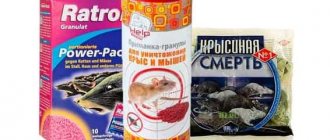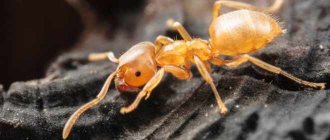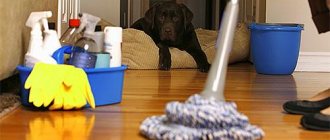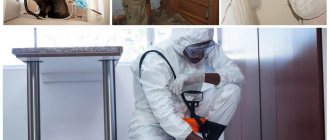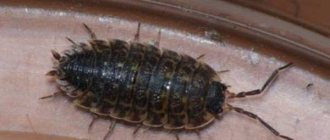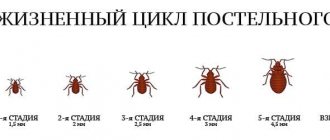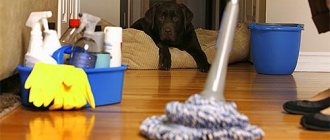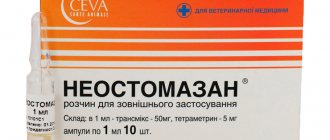The destruction of fleas in an apartment is often required not only by cat or dog owners. These small insects can appear even in places where there are no pets and never have been. Treating an apartment against fleas can be done either with your own hands or with the help of professionals from the SES. In any case, you should not delay disinfection, because a multiplying insect can cause a lot of problems for humans and pets.
Service cost
- Prices for individuals
- For legal entities
| Apartment | Cold fog | Hol. fog + barrier protection | Hot fog + protection | Complex |
| 1 room | RUB 1,800 | RUB 2,700 | RUB 4,500 | 6,200 rub. |
| 2 rooms | RUB 2,100 | 3,000 rub. | RUB 4,700 | 6,600 rub. |
| 3 rooms | RUB 2,300 | RUB 3,200 | RUB 4,900 | RUB 6,900 |
| 4 rooms | RUB 2,500 | RUB 3,400 | RUB 5,100 | RUB 7,200 |
| 5 rooms | RUB 2,700 | RUB 3,600 | RUB 5,300 | RUB 7,600 |
| MOP | RUB 1,500 | 2,000 rub. | 3,000 rub. | 4,000 rub. |
| Square | One-time processing | Service |
| 50 -100 M² | from 2,400 rub. | from 2,000 rub. |
| 100 – 300 M² | from 30 rub/m² | from 25 rub/m² |
| 300 – 600 M² | from 27 RUR/M² | from 21 RUR/M² |
| 600 – 1,000 M² | from 20 rub/m² | from 18 RUR/M² |
| 1,000 - more than M² | negotiable | negotiable |
Promotions and discounts
#tab_container_2861 { overflow:hidden; display:block; width:100%; border:0px solid #ddd; margin-bottom:30px; } #tab_container_2861 .tab-content{ padding:20px; border: 1px solid #e6e6e6 !important; margin-top: 0px; background-color:#ffffff !important; color: #000000 !important; font-size:15px !important; font-family: Helvetica !important; border: 1px solid #e6e6e6 !important; } #tab_container_2861 .wpsm_nav-tabs { border-bottom: 0px solid #ddd; } #tab_container_2861 .wpsm_nav-tabs > li.active > a, #tab_container_2861 .wpsm_nav-tabs > li.active > a:hover, #tab_container_2861 .wpsm_nav-tabs > li.active > a:focus { color: #000000 !important ; cursor: default; background-color: #ffffff !important; border: 1px solid #e6e6e6 !important; } #tab_container_2861 .wpsm_nav-tabs > li > a { margin-right: 0px !important; line-height: 1.42857143 !important; border: 1px solid #e8e8e8 !important; border-radius: 0px 0px 0 0 !important; background-color: #fbfbfb !important; color: #000000 !important; padding: 15px 18px 15px 18px !important; text-decoration: none !important; font-size: 15px !important; text-align:center !important; font-family: Helvetica !important; } #tab_container_2861 .wpsm_nav-tabs > li > a:focus { outline: 0px !important; } #tab_container_2861 .wpsm_nav-tabs > li > a:before { display:none !important; } #tab_container_2861 .wpsm_nav-tabs > li > a:after { display:none !important ; } #tab_container_2861 .wpsm_nav-tabs > li{ padding:0px !important ; margin:0px; } #tab_container_2861 .wpsm_nav-tabs > li > a:hover , #tab_container_2861 .wpsm_nav-tabs > li > a:focus { color: #000000 !important; background-color: #fbfbfb !important; border: 1px solid #e8e8e8 !important; } #tab_container_2861 .wpsm_nav-tabs > li > a .fa{ margin-right:5px !important; margin-left:5px !important; } #tab_container_2861 .wpsm_nav-tabs a{ background-image: none; background-position: 0 0; background-repeat: repeat-x; } #tab_container_2861 .wpsm_nav-tabs > li { float: left; margin-bottom: -1px !important; margin-right:0px !important; } #tab_container_2861 .tab-content{ overflow:hidden !important; } @media (min-width: 769px) { #tab_container_2861 .wpsm_nav-tabs > li{ float:left !important ; margin-right:-1px !important; } #tab_container_2861 .wpsm_nav-tabs{ float:none !important; margin:0px !important; } #tab_container_2861 .wpsm_nav-tabs > li { } #tab_container_2861 .wpsm_nav{ } } @media (max-width: 768px) { #tab_container_2861 .wpsm_nav-tabs > li { } #tab_container_2861 .wpsm_nav{ } } .wpsm_nav-tabs li :before{ display:none !important; } @media (max-width: 768px) { #tab_container_2861 .wpsm_nav-tabs li ai{ display: none !important; } .wpsm_nav-tabs{ margin-left:0px !important; margin-right:0px !important; } #tab_container_2861 .wpsm_nav-tabs > li{ float:none !important; } }
- Promotions and discounts
- Payment Methods
50% discount on the provision of the second service 50% discount on the processing of the second apartment 10% discount for holders of a Muscovite social card
Sberbank
VISA cards
MasterCard
Maps WORLD
For Jur. persons
jQuery(function () { jQuery('#myTab_2861 a:first').tab('show') }); "}" data-sheets-userformat='{"2″:14851,"3":{"1″:0},"4″:[NULL,2,14281427],"12″:0,"14″ :[NULL,2,0],»15″:»Roboto»,»16″:10}'>
Promotions and discounts
- Promotions and discounts
- Payment Methods
50% discount on the provision of the second service 50% discount on the processing of the second apartment 10% discount for holders of a Muscovite social card
Sberbank
VISA cards
MasterCard
Maps WORLD
For Jur. persons
Prices for disinfestation
Regular disinfestation
| Price** of disinsection for organizations for the provision of services, rub./1 sq.m., per month, excluding VAT, for food facilities in Moscow (within the Moscow Ring Road)* | |||||||
| Area, sq.m. | up to 100 | from 101 to 300 | from 301 to 500 | from 501 to 1000 | from 1001 to 2000 | from 2001 to 3000 | over 3000 |
| pest control | 2100.00 - fixed cost | 13,00 | 9,75 | 8,45 | 5,33 | 3,25 | 1,82 |
| deratization and disinfestation | 2500.00 - fixed cost | 14,43 | 10,14 | 8,97 | 5,62 | 3,28 | 2,03 |
One-time disinfestation
| Price** of disinsection for organizations for the provision of one-time services, rub./1 sq.m., excluding VAT, for food facilities in Moscow (within the Moscow Ring Road)* | |||||||
| Area, sq.m. | up to 100 | from 101 to 300 | from 301 to 500 | from 501 to 1000 | from 1001 to 2000 | from 2001 to 3000 | over 3000 |
| pest control | 5940.00 - fixed cost | 55,00 | 41,25 | 35,75 | 22,55 | 13,75 | 7,70 |
| deratization and disinfestation | 6720.00 - fixed cost | 61,05 | 42,9 | 37,95 | 23,76 | 13,86 | 8,58 |
**The cost of services for disinfestation of enterprises, given in the tables, is calculated for objects located outside the Moscow Ring Road, the cost of services is calculated using the formula S=Sm+L*35, where S is the cost of services, Sm is the cost of services in Moscow, within the Moscow Ring Road , L — from the Moscow Ring Road, in kilometers.
Regular disinfestation
| Price** of disinsection for organizations for the provision of services, rub./1 sq.m., per month, excluding VAT, for non-food facilities in Moscow (within the Moscow Ring Road)* | |||||||
| Area, sq.m. | up to 100 | from 101 to 300 | from 301 to 500 | from 501 to 1000 | from 1001 to 2000 | from 2001 to 3000 | over 3000 |
| pest control | 1400.00 - fixed cost | 10,00 | 7,50 | 6,50 | 4,10 | 2,50 | 1,40 |
| deratization and disinfestation | 2100.00 - fixed cost | 11,1 | 7,8 | 6,9 | 4,32 | 2,52 | 1,56 |
One-time disinfestation
| Prices** for organizations for the provision of one-time services, rub./1 sq.m., excluding VAT, for non-food facilities in Moscow (within the Moscow Ring Road)* | |||||||
| Area, sq.m. | up to 100 | from 101 to 300 | from 301 to 500 | from 501 to 1000 | from 1001 to 2000 | from 2001 to 3000 | over 3000 |
| pest control | 5400.00 - fixed cost | 50,00 | 37,50 | 32,50 | 20,50 | 12,50 | 7,00 |
| deratization and disinfestation | 6100.00 – fixed cost | 55,5 | 39 | 34,5 | 21,6 | 12,6 | 7,8 |
**The cost of services for disinfestation of enterprises, given in the tables, is calculated for objects located outside the Moscow Ring Road, the cost of services is calculated using the formula S=Sm+L*35, where S is the cost of services, Sm is the cost of services in Moscow, within the Moscow Ring Road , L — from the Moscow Ring Road, in kilometers.
| Disinsection in residential premises - (extermination of insects - cockroaches, ants, fleas, etc., with the exception of bedbugs) | ||
| Volume | Cost of services (RUB, including VAT 18%) | Warranty |
| Common areas | From 2000 | Is not provided |
| 1-room apartment | From 3000 | 6 months |
| 2-room | From 3500 | |
| 3-room apartment | From 3800 | |
| 4-room apartment | From 4000 | |
Who are fleas
A flea is a small, blood-sucking, wingless insect from the order of arthropods. Young individuals are black in color, while more mature ones are brown. The body length of a flea is no more than 5 mm, which is why their appearance in an apartment is not always immediately noticeable. Residents usually find out that these unpleasant insects are in the house only by the appearance of bites on the skin.
Fleas cannot fly, however, thanks to their strong and developed limbs, they deftly cling to the body of an animal and move around it, and are also able to jump over distances many times greater than their own length.
The average life cycle of fleas is several months, but under favorable conditions they can live two to three years. During this time, the female can lay up to 500 eggs.
For a comfortable life, fleas choose warm places with high humidity. All species of these blood-sucking insects are distinguished by significant endurance and are able to survive without food for a long time.
Types of fleas
Modern scientists identify more than 2,000 types of them, but the most common are:
- Rat. This insect is considered one of the most dangerous, because. is a carrier of such serious diseases as rat tapeworm and plague.
- Canine. They can live on the body of not only dogs, but also cats, and carry diseases such as plague and hepatitis.
- Feline. Dangerous parasites, whose massive attack on animals leads to exhaustion and the development of anemia.
- Human. Despite their name, they live not only on humans, but also on horses, cats and dogs, and are capable of continuously sucking blood for almost half an hour.
Where do they live?
The most common habitat for fleas is the basements of residential buildings, including new buildings. They end up there with rats, mice, stray cats and dogs. The need to look for food forces fleas to gradually move through sewers and ventilation and enter living spaces through cracks in the floor.
Other common flea habitats include:
- garbage dumps, especially those with rats;
- habitats of stray animals;
- abandoned buildings;
- attics of residential buildings.
Where do they come from?
Fleas can get into an apartment in different ways:
- In many cases, pets become the source of fleas entering an apartment. During walks, insects jump on the fur of dogs and cats, and then, once inside the apartment, they quickly multiply.
- They move through sewers and ventilation from neighboring apartments or attics. Their spread is especially facilitated by unsanitary conditions and the accumulation of garbage and rubbish in the house.
- From the basement and technical rooms located in the entrance, a common corridor. They can be brought on their feet either by the owners themselves or by plumbers or electricians who are forced to periodically visit the basement of the house.
- They may be included during a move with the delivery of furniture or household appliances. You should be especially careful when moving to a new apartment, because... previous owners may not have completely gotten rid of fleas or may not have known about their existence at all.
- On people's clothing, especially wool or fur.
Places of concentration in the apartment
If fleas have already appeared in the apartment, it is important for the owners to know in which places they are concentrated. These insects cannot jump high, so their habitats are usually located no higher than one and a half meters from the floor. Of course, they move quite quickly throughout all rooms, but the maximum number of insects can be found on fur clothing, soft toys, bed linen, towels, rugs and pet bedding. It is these places that will need to be given the most attention when carrying out pest control.
Flea detection test
Fleas multiply in an apartment at a tremendous speed, so you need to start getting rid of them as soon as they appear. If the owners suspect that these unpleasant insects have appeared at home, but are not sure about it, experts recommend performing the following test: lay several sheets of clean white paper or a large light sheet on the floor and carefully observe them for several minutes. If there really are fleas in the apartment, then most likely they will jump onto paper or fabric and the owners will see small black dots appearing on a white background and instantly disappearing.
Peculiarities of parasite reproduction
To understand how to kill fleas in an apartment, you should understand the nuances of reproduction and parasitism of bloodsuckers. Adults are not large in size, and the size of their inconspicuous, flattened brown body does not exceed 5 mm. The cover is densely covered with small bristles, which allow the insect to move well in animal hair and carpet pile.
On a note!
In everyday life there are cat, dog, rat and human fleas, but since only an entomologist can identify a particular species, in everyday life the term “household fleas” is applied to all representatives of the flea family.
Fleas
Adults feed on the blood of warm-blooded fauna. Fleas are not particularly selective when choosing a food source and, in the absence of an animal, can attack humans.
Contrary to misconception, parasites do not spend all their time on the victim's body. They create their settlements near the food base in dark, secluded corners. In an apartment, they can live in accessories, pet bedding, on the floor, in carpets, in soft toys, in cracks, in places of high humidity - near sinks, sinks, showers.
Mating of domestic fleas occurs outside the victim's body. The female lays up to 40 eggs per day, and during her life she is capable of giving birth to 500 new individuals. The laying of offspring occurs in a very original way. The female individual forcefully squeezes the embryos out of herself, and they scatter across all nearby surfaces. Therefore, it will not be possible to remove fleas from an apartment without destroying the eggs.
The eggs are small in size and white in color. There is practically no adhesive substance on their shell, so they do not stick to wool or lint, which allows the embryos to roll off and spread indoors in bedding, upholstery, and on the floor. It is very difficult to identify eggs with the naked eye. In appearance they look like small grains of salt or dandruff.
Fleas, their eggs and larvae
After 5-14 days, depending on the temperature and humidity in the apartment, blind white larvae, similar to fleshy caterpillars, appear from the eggs. The mouthparts of young animals are not yet adapted to consume blood, so they feed on feces, waste products of the imago, and organic debris. The larva undergoes several molts, after which it enters the pupation stage and turns into a full-fledged adult flea.
What are the dangers for humans and pets?
Despite the fact that almost all types of fleas do not live on humans and use their body only as a short-term habitat, they often bite people. These bites should not be ignored, because they can not only cause discomfort, but also carry such serious diseases as typhus and typhoid fever, plague, hepatitis and salmonellosis.
Flea bites can cause severe allergies: blisters appear on the body, accompanied by severe itching, rash or redness. In some cases, long-term treatment may be required.
Danger for children
Since children are more prone to allergic reactions than adults, it is for the former that flea bites are potentially more dangerous, and you need to especially carefully monitor the child’s body’s reaction to the bite. An allergic reaction can manifest itself in the form of headache, swelling, inflammation of the lymph nodes, and in especially severe cases, a bite can even lead to anaphylactic shock. If any manifestations of allergies occur in a child, it is recommended to consult a doctor who will prescribe the necessary treatment.
What are basement fleas?
The size of adult individuals reaches no more than 2–3 millimeters. Their body is round and flattened on the sides. Color can range from black to dark brown. Elongated and powerful hind limbs give the parasite the ability to jump to a height of up to 50 cm.
The flea attaches itself to the host with the help of bristles that cover its entire body. An adult lives up to 1.5–2 years; during a hungry period, it can fall into suspended animation for up to 3 months. Over the course of her entire life, the female manages to give birth to approximately 500 parasites.
Among all the available stages of development of the earthen flea, it poses a danger to humans only in the imago (adult) stage.
Where do basement fleas come from?
The habitats of this type of parasite are most often basements and attics: this is explained by the fact that there are optimal conditions for their life and reproduction, namely:
- temperature from 17 to 27 degrees Celsius;
- average air humidity 70%;
- heavy dustiness.
Such conditions contribute to the active reproduction of parasites. It should be noted that they can lay eggs both in various trash and in animal fur.
In residential premises, parasites most often settle and multiply in carpets, mattresses, soft toys, under baseboards, in various crevices and cracks.
Bloodsuckers can get into your home:
- caught on pet fur (for them this is easier than getting caught on clothes or shoes);
- getting over from neighbors through cracks and cracks in walls and ceilings, ventilation holes;
- on the fur of rats and mice.
Flea infestations should be expected during droughts, when the ground dries out and air humidity decreases sharply. In this case, basement fleas rise higher in search of more comfortable living conditions and food. And the blood of a wide variety of warm-blooded mammals serves as food for them.
Having caught such an insect in the fur of an animal, you can be sure that fleas have settled in your house
In this case, residents of the first and third floors and private houses suffer the most.
It’s interesting that even if your home is perfectly clean, which is maintained through regular general cleaning, this will not help save you from parasites. After all, they can lay their eggs anywhere, except in trash, but they can find fresh blood only in the habitats of animals and people.
Why are basement flea bites dangerous for humans and animals?
At first glance, it may seem that the main and only consequence of a basement flea bite is the appearance of redness and itching. In fact, it is capable of causing much more harm. Thus, a parasite bite in some cases causes:
- a severe allergic reaction due to flea saliva entering the blood;
- helminth infection;
- damage to the body by various infections and viruses - plague, malaria, salmonellosis, typhoid, etc.
If you are bitten by an earthen flea, you must first wash the affected area with warm water and soap (preferably household soap). Then, to prevent scratching, lubricate the bite area with any cream against itching and skin damage (Fenistil, Levomekol, Advantan, etc.). If you have a tendency to allergic reactions, it is advisable to take an antihistamine - Diazolin, Zyrtec, etc.
The presence of numerous itchy red marks on the legs is one of the signs of fleas
Do-it-yourself extermination of fleas in an apartment or house
So, there are fleas in the house. Initially, you can try to get rid of them yourself, without resorting to the help of specialists from the SES. There are several accessible and fairly effective ways to kill fleas:
- If there are animals in the house, you should start the procedure for getting rid of fleas with them. Modern stores offer a wide selection of products for pets, and sales consultants will help you choose the best drug for a particular animal. It is necessary to put an anti-flea collar on a cat or dog, and after treatment, if possible, temporarily move the pet to another apartment to minimize the risk of re-infection.
- Carrying out “general” wet cleaning using a vacuum cleaner, thoroughly ventilating the rooms, knocking dust out of carpets and rugs. Clothes, curtains, and bed linen must be washed in a washing machine at the highest temperature possible for each type of fabric. It is recommended to take your outerwear to the dry cleaner and wash your shoes thoroughly. Shelves, baseboards, and wooden furniture must be wiped using disinfectants.
- Fleas do not like the smell of wormwood, so you can try to get rid of them using this plant. Twigs of wormwood should be placed on furniture, under tables, under carpets, between baseboards. If it is not possible to get a fresh plant, you can purchase an infusion of wormwood at the pharmacy. It must be diluted with water according to the instructions and sprayed with a spray bottle, trying to ensure that the liquid gets into all hard-to-reach places in the apartment. You should treat your apartment against insects with wormwood infusion every day.
- Essential oils with pungent odors, such as juniper, lavender, mint and clove oils, are also considered no less effective than wormwood. They can not only be sprayed from a spray bottle, but also diluted in water and washed floors and furniture. Bloodsuckers are also repelled by the smells of citrus fruits and garlic.
- Using table salt and soda. These two products must be mixed in equal proportions and spread evenly on the floor, carpets and rugs. After 12 hours, all surfaces should be vacuumed from fleas and their larvae accumulated on the floor.
- Freezing. This method is suitable for the cold season and consists of completely ventilating the apartment for several hours, and ideally throughout the day. At subzero temperatures, both adults and larvae die. The disadvantage of this method is the likelihood of pipe damage.
What to do after the master leaves
Once the process is completed and the sanitation worker has left, you do not need to remain in the room for 3 hours. Then you should carefully check the property. To achieve maximum treatment results, it is not recommended to carry out general cleaning within a week, so as not to wash off the active substance. It is enough to wipe the central part of the floor and the working surfaces of the furniture.
To effectively combat fleas in Moscow and get rid of the infestation for a long time, you do not need to make only your own efforts and rely on purchased products of dubious quality. For new hordes of bloodsuckers to appear, a laying of eggs from one surviving female is sufficient.
When fleas are found in the entrance, not everyone knows where to go. If a problem occurs, do not expect serious consequences and do not delay seeking sanitary treatment. Know that while you are thinking, your unpleasant roommates are multiplying, and your delay is making the situation worse.
Monitor your pets' behavior carefully. Check your own body and that of your children regularly. The characteristic bite marks are clearly visible and difficult to confuse with anything else.
Follow sanitary standards and regulations. Simple precautions will keep you calm and healthy, and ensure comfortable living in your own home.
Flea disinfection: drugs and products used
If folk remedies do not help get rid of insects, you should resort to the use of chemicals - insecticides. Before disinfestation, it is necessary to carry out wet cleaning, move furniture away from the walls, remove carpets and paintings, and remove children and pets from the premises.
The stores offer a fairly wide selection of specialized flea products. The selected product should be used strictly in accordance with the instructions.
The most popular flea disinfectants are the following:
- Sinuzan is a very effective remedy that helps get rid of not only fleas, but also cockroaches and bedbugs. It has a characteristic pungent odor that can cause poisoning in humans, so after treating the apartment you must leave the room for at least several hours, and the room should be treated with gloves and safety glasses. The effect of using this product lasts for one to two months.
- Gett . It is practically odorless and does not leave stains on furniture and interior items after treatment, and can also be used in hot weather and high humidity.
- Biorin . It is safer for humans than previous products, but is no less effective. Helps destroy not only fleas, but also other domestic parasites.
- Chlorpyrimark . An economical and fairly safe product that can be used to treat hospitals and children's institutions.
- Biocyfen . Used to treat premises against fleas, cockroaches and mosquitoes. Available in powder form, which must be applied to all surfaces, baseboards, and plumbing fixtures. It is easy to use and has a long lasting effect.
- Raptor . Available in aerosol form, it is odorless and non-toxic to people and pets.
Preparing the premises
Proper preparation of the premises for flea treatment significantly increases the effectiveness of the event and reduces the time required to carry out all procedures. Basic recommendations:
- During treatment by SES specialists, household members and their pets must leave the apartment. Spraying the insecticide and airing takes 3-5 hours.
- Wash pet bedding and clothing, curtains, bedspreads, bed linen and other textiles at a temperature of 60-90 degrees.
- Cover the aquarium with a damp towel or film, turn off the compressor until the room is ventilated.
- Vacuum the carpet, upholstered furniture, linoleum, paying special attention to hard-to-reach places.
- Treat folds of upholstered furniture with detergent.
- Clear the floor of toys, chairs, small furniture and other items.
- Pack food products in sealed bags or containers and put them in a closet.
Depending on the method and insecticidal preparation, a few days after the event, you will need to carry out a general cleaning of the apartment. If the first procedure does not bring the expected result, SES specialists re-treat the room.
Professional treatment of premises against fleas with the help of SES in Moscow
Independent destruction of parasites is a long, labor-intensive process that is not always safe for the health of humans and pets. In addition, in some cases, the population of blood-sucking insects in an apartment or house is so large that it is impossible to get rid of it using folk or store-bought medicines. In such a case, it is necessary to contact the SES so that specialists carry out professional treatment of the premises, guaranteeing complete disposal of parasites. It is advisable to carry out disinfestation together with your neighbors in order to protect the entire house from fleas and minimize the risk of their reappearance.
The SES-Moscow service carries out pest control measures in apartments located in the city of Moscow and the Moscow region.
To treat premises against fleas, only modern equipment and proven chemicals are used!
Disinsection is carried out using cold and hot fog methods. The cold fog method is considered safer for people and animals and consists of spraying an insecticide at room temperature on a surface using a special generator. The fog settles in an even layer and is capable of destroying insects and their larvae almost instantly.
The principle of operation of hot fog is similar to cold fog, but in the second case, the active substance is supplied in a heated form, which makes it possible to control the direction of air flow and penetrate into the most inaccessible places in the room.
What needs to be done before treating an apartment or private house for fleas
To prepare for disinfestation, home owners need to do the following:
- remove food;
- remove indoor plants from the access area of exterminators;
- move furniture to the middle of the room to provide access to baseboards and cracks in the floor;
- cover all household appliances with a thick cloth.
Sanitary and Epidemiological Station Certificates
Processing a basement or cellar
Now it's time to move on to pest control of the basement or cellar. To do this, choose a more powerful product than what you used at home. Pay attention to the drugs, Sinuzan, Tetrix and Diazinon. Manufacturers do not recommend using them for residential premises, but they are ideal for exterminating insects in the basement.
First you need to clear the basement of all unnecessary things. Fleas love to live in piles of old clothes and trash. Without removing them, you will not be able to carry out full processing.
Spray all surfaces, corners and crevices of the basement. When leaving there, do not forget to limit the access of air as much as possible - close the door and windows tightly.

